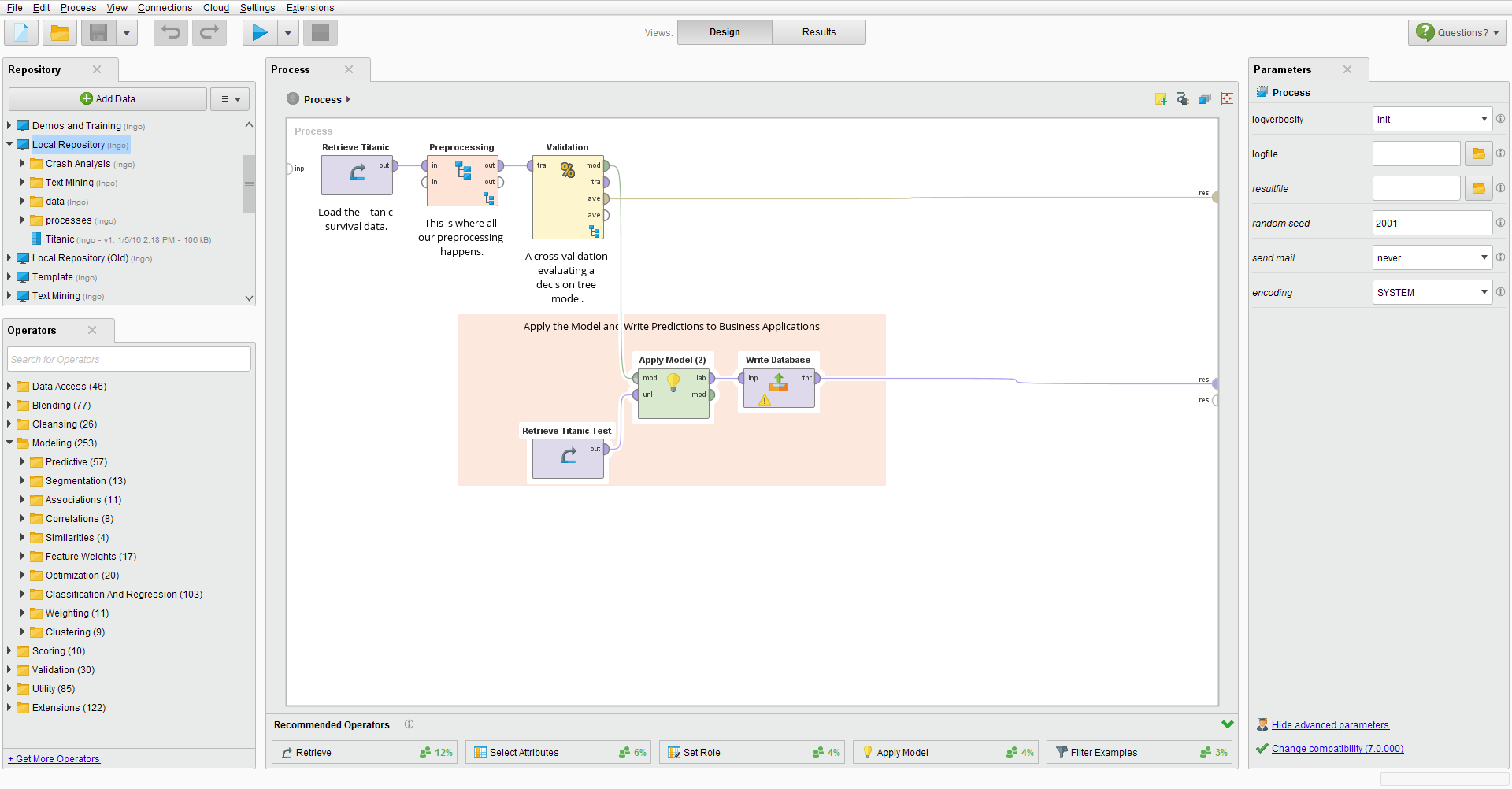
You can do all your analysis and evaluate your results in the RapidMiner platform. The power of RapidMiner Studio lies in the ability to use many different data science tools, like scripting languages. Executing R and Python Scripts in RapidMiner AI Hub However, you must have the DataTables library installed for R to work with RapidMiner and the Pandas module for Python to work with RapidMiner. Tip: You are not bound by the distribution or version when using R and Python. Below are my settings for both R and Python: If you’ve installed the R and Python Scripting extensions from the Marketplace, you’d have to set your Path for each one in your Preferences tab. No! Chances are you forgot to tell RapidMiner AI Hub where your R and Python executables are installed! R and Python Configuration Settings in RapidMiner Studio Is the database connected to your data source? Is it a Process Path issue? You think you made a mistake and take another look at your data dependencies. You do a simple “Save As” and save the processes on the RapidMiner AI Hub and then hit “Run on Server.”Ī few seconds later, your process crashes. Now you want to operationalize them in to your business application via RapidMiner AI Hub (formerly RapidMiner Server). She primarily focuses on the database domain, helping clients build short and long term multi-channel campaigns to drive leads for their sales pipeline.The scenario: You’ve spent quite some time setting up your RapidMiner Studio with R and Python and building processes that effortlessly flow between them. Nupur Dave is a social media enthusiast and an independent consultant.


#Rapidminer studio vs server free#
If you need help with any SQL Server Performance Tuning Issues, please feel free to reach out at is also a CrossFit Level 1 Trainer (CF-L1) and CrossFit Level 2 Trainer (CF-L2).
#Rapidminer studio vs server professional#
Pinal is an experienced and dedicated professional with a deep commitment to flawless customer service. To freely share his knowledge and help others build their expertise, Pinal has also written more than 5,500 database tech articles on his blog at. Pinal has authored 13 SQL Server database books and 45 Pluralsight courses. He holds a Masters of Science degree and numerous database certifications. Pinal Dave is an SQL Server Performance Tuning Expert and independent consultant with over 17 years of hands-on experience. Please leave a comment as everyone would love to learn from it. Well, now that you have read my top 5 features, I would love to know what is your opinion and what are your top 5 features. 5 Top Features of Azure Data Studioĥ Top Features of SQL Server Management Studio Remember, these are not the feature promoted by Microsoft or anyone but the list is built from my own experience. Here are the top 5 features from my experience in using both the products. Similarly, there is no reason to ignore ADS as well as it also has some cool feature, I really wish SSMS always provided. If you are an SSMS fan, there is no need to worry about the product going away immediately as I do not think ADS is anyway replacement of SSMS. I have been using ADS and SSMS for a while and at this point in time, I can tell you both of them are here to stay. However, if you are hardcore DBA who is primarily focused on the advanced administrative configurations, manage high availability, run SQL Agent jobs and query store consumer – SQL Server Management Studio is the right tool for you.

Well, there you go, if you are the hardcore developer who is just writing the queries, executing them and more visual result sets person, Azure Data Studio is for you. Whereas if you look at the SQL Server Management Studio, there are quite a lots of components 1) Databases, 2) Security 3) Server Objects, 4) Replication, 5) PolyBase, 6) Always On High Availability, 7) Management, 8) Integration services Catalogs, 9) SQL Server Agent and 10) XEvent Profiler. You can clearly see that in Azure Data Studio we have three components of SQL Server 1) Databases, 2) Security and 3) Server Objects. Well, before we start the conversation let us see the following image. After reading the blog post, I receive an email from a reader asking about the primary difference between Azure Data Studio (ADS) and SQL Server Management Studio (SSMS). Earlier I blogged about SQL SERVER – Getting Started with Azure Data Studio.


 0 kommentar(er)
0 kommentar(er)
